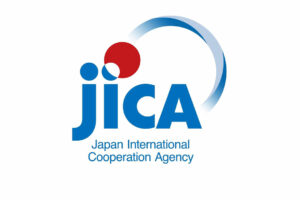THE Japan International Cooperation Agency (JICA) is considering funding over 10 projects in the Philippines, including railway and other infrastructure, next year.
“We are now preparing more than 10 candidate projects for the next year,” JICA Chief Representative in the Philippines Takema Sakamoto told reporters on the sidelines of an event on Friday.
These projects include bridges, railway, and road infrastructure, he said.
“But, of course, it depends on both countries’ screening processes and budget constraints… but JICA is keen to promote and formalize more projects in the double digits.”
Mr. Sakamoto has said he hopes to disburse Philippine loans exceeding the ¥300 billion to ¥400 billion (around P115 billion to P153 billion) approved last year.
JICA typically supports up to 80% of a project’s total cost, he said.
“I am in a position to convince Tokyo to get more resources, and from this point of view, one important element is a good track record of the ongoing projects. Otherwise, I cannot get more trust from our national taxpayers.”
“The Philippines is a very reliable partner. So, I stress the importance of the good progress of the ongoing projects,” Mr. Sakamoto said, citing the North-South Commuter Railway, Metro Manila Subway, and flood control projects.
In March, the Department of Finance and JICA signed the third tranche of a ¥150-billion loan agreement for the first phase of the Metro Manila Subway Project.
The 33-kilometer underground railway system will traverse eight cities in Metro Manila, including key business districts. It is estimated to cost P488.5 billion and is due for completion by 2029.
Last year, JICA also signed a ¥270-billion loan with the Philippines for the NSCR.
JICA and the Asian Development Bank are co-financing the P873-billion NSCR. The 147-kilometer railway will connect Malolos, Bulacan with Clark International Airport and Tutuban, Manila with Calamba, Laguna. It will have 35 stations and three depots.
Mr. Sakamoto also cited the need to speed up JICA-supported flood management projects.
The agency has been collaborating with the government on the Pasig-Marikina River Channel Improvement Project Phase 4, as well as river improvement projects in Cavite, Cagayan De Oro, and Davao.
In January, JICA and the Department of Public Works and Highways (DPWH) signed a new technical cooperation to improve the country’s flood control strategy. This includes the updating of masterplans and pre-feasibility studies.
‘ROOM TO IMPROVE’Mr. Sakamoto said the Philippines has “much room to improve” in regard to the time it takes to implement foreign-assisted projects.
Longer decision-making and land acquisition processes, as well as untimely payments are the major reasons for project delays, he added.
Rene S. Santiago, former president of the Transportation Science Society of the Philippines, said loans extended to the Philippines may decrease with further project delays.
“Every lender has its own lending cap, similar to commercial banks’ single borrower’s limit. Poor utilization rate also signals to lenders that it’s time to trim their loan volumes,” he said via Viber.
Earlier this year, President Ferdinand R. Marcos, Jr. issued Executive Order No. 59, which seeks to fast-track its priority infrastructure projects. Administrative Order No. 20 was also signed to hasten land acquisition for railway projects.
Japan was the top source of official development assistance (ODA) in 2023 with a total portfolio of $12.07 billion. This accounted for 32.36% of the Philippines’ total ODA for the period. — Beatriz Marie D. Cruz
